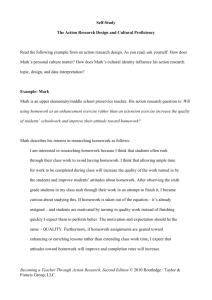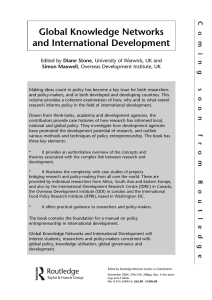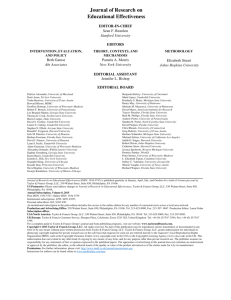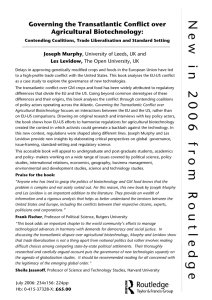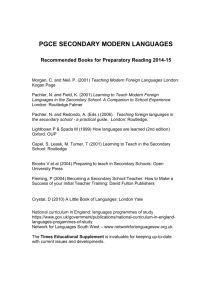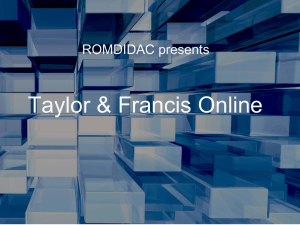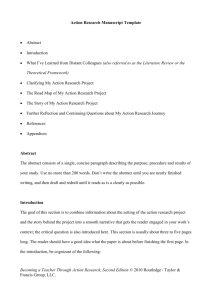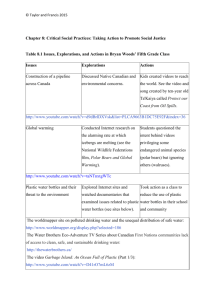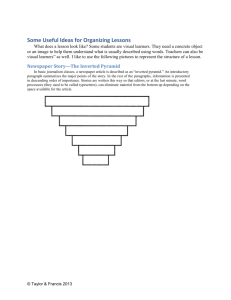Analyzing Your Own Action Research Design for Cultural Proficiency
advertisement
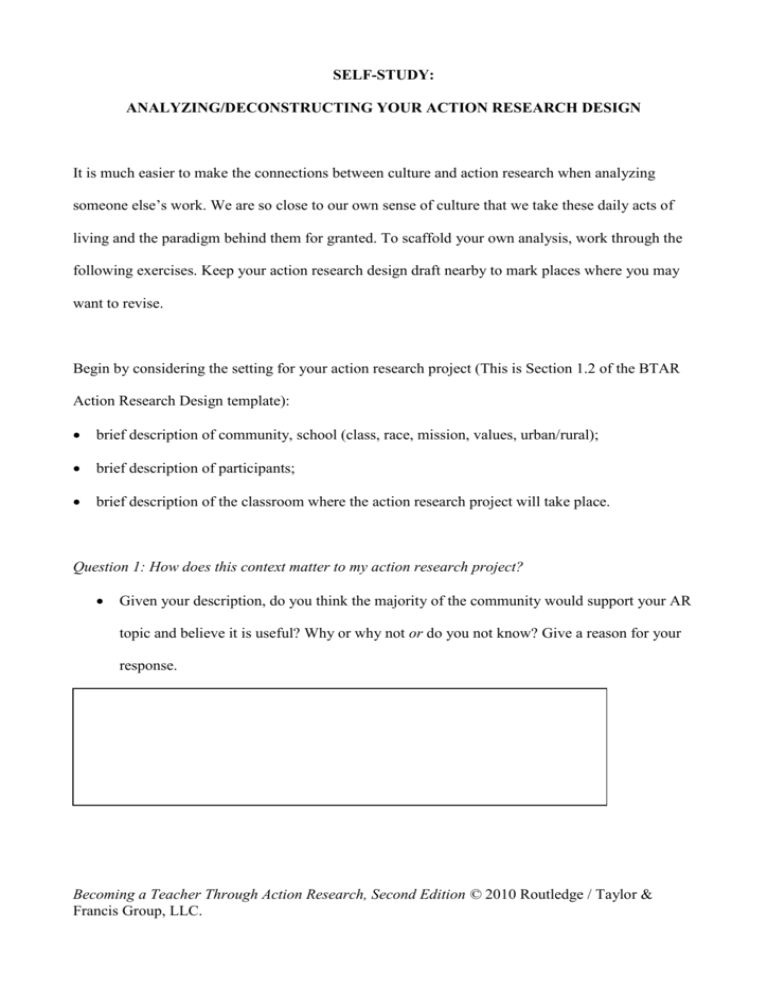
SELF-STUDY: ANALYZING/DECONSTRUCTING YOUR ACTION RESEARCH DESIGN It is much easier to make the connections between culture and action research when analyzing someone else’s work. We are so close to our own sense of culture that we take these daily acts of living and the paradigm behind them for granted. To scaffold your own analysis, work through the following exercises. Keep your action research design draft nearby to mark places where you may want to revise. Begin by considering the setting for your action research project (This is Section 1.2 of the BTAR Action Research Design template): brief description of community, school (class, race, mission, values, urban/rural); brief description of participants; brief description of the classroom where the action research project will take place. Question 1: How does this context matter to my action research project? Given your description, do you think the majority of the community would support your AR topic and believe it is useful? Why or why not or do you not know? Give a reason for your response. Becoming a Teacher Through Action Research, Second Edition © 2010 Routledge / Taylor & Francis Group, LLC. Given your description, do you think those considered the “minority” in the community would support your AR topic and believe that it is useful? Why or why not or do you not know? Give a reason for your response. How is teaching, learning, and doing research supported or not supported by this context? (This is an important question to consider) Consider the community demographics as you have presented them. What do you suppose this community wants from their schools? On what do you base your answer? Becoming a Teacher Through Action Research, Second Edition © 2010 Routledge / Taylor & Francis Group, LLC. Question 2: What is my comfort level within this community/school context? In the space below, create a Venn diagram. Label one circle as “My School Community” and the other circle, “Me, as a Teacher-Researcher.” Using the demographic and descriptive information from your Action Research Design, explore how you are different and/or the same as the community where you are teaching. The first time, complete the Venn diagram based upon the dominant population and the second time do it based upon other populations within the school: Becoming a Teacher Through Action Research, Second Edition © 2010 Routledge / Taylor & Francis Group, LLC. Now, review the story behind your action research project (This is Section 1.3 of the BTAR Action Research Design template): why I am interested in this area; what my own experiences are with this area; how my own values, beliefs, and sense of what “good teaching” is represented in this action research project; what my biases are; how my position as a student teacher influences the project. Question 3: How does this information matter to my action research project? If you met the families of students in your classroom at a social event, what kind of event would be most likely be? (a) a family-sponsored event; (b) a neighborhood block party; c) a church-sponsored event; (d) an open house at a local art gallery; (e) a civic event. Would you be comfortable in this setting? Do you think you could become friends with all or part of the families represented in your classroom if you met them in another setting? Expand on your answer. Becoming a Teacher Through Action Research, Second Edition © 2010 Routledge / Taylor & Francis Group, LLC. Do you believe the majority of the families in your classroom would agree with your description of “good teaching”? Why or why not? Which families in your classroom would agree with your perception of “poor classroom behavior”? Why? Use any new information to jot down revision notes on your Action Research Design. Question 4: How does the strategic intervention, innovation to be implemented, evaluation to be conducted, and/or other action to be applied in your study support learning for and by all children and/or adolescents in your classroom? Becoming a Teacher Through Action Research, Second Edition © 2010 Routledge / Taylor & Francis Group, LLC. Here are some questions to guide your response: 1. How does your action research design and specific action support differentiated learning (learning for all students)? 2. How does your action research design recognize and support diversity? 3. How does your action research design plan for multiple viewpoints? 4. How do organizational and/or school systems provide possibilities and barriers to your research? 5. How does your action research design deal with conflict? Becoming a Teacher Through Action Research, Second Edition © 2010 Routledge / Taylor & Francis Group, LLC. If you are using the BTAR Action Research Design template, use your responses to these questions to revise Section 1.5: A synopsis of the strategy to be used, the intervention to be tried, the innovation to be implemented, the evaluation to be conducted, or other action to be applied in the study. Question 5: How does your design account for cultural proficiency when interpreting data? 1. Where in the data interpretation might you need to be aware of cultural knowledge when interpreting behaviors personal interactions? Who might be a good resource for this kind of knowledge if you feel you are lacking in this area? 2. If there appear to be conflicting “results” in your data interpretation, how do you plan to resolve and/or represent these conflicts? 3. What stereotypes and/or prejudices might influence the data interpretation? Becoming a Teacher Through Action Research, Second Edition © 2010 Routledge / Taylor & Francis Group, LLC. 4. What kinds of distrust might exist within the school context that could influence your data interpretation? 5. What kinds of systems, organization, and/or structures exist that may need to be questioned for their influence upon your data interpretation? What do you assume about these systems, organization, and/or structures? Having worked through these questions, return to your Action Research Design and read your critical question. How is your critical question reflective of your own cultural context? Do you need to make any revisions here? Share your revised action research design with your critical colleague as you evaluate your own abilities to be a culturally proficient teacher/action researcher. Becoming a Teacher Through Action Research, Second Edition © 2010 Routledge / Taylor & Francis Group, LLC.

